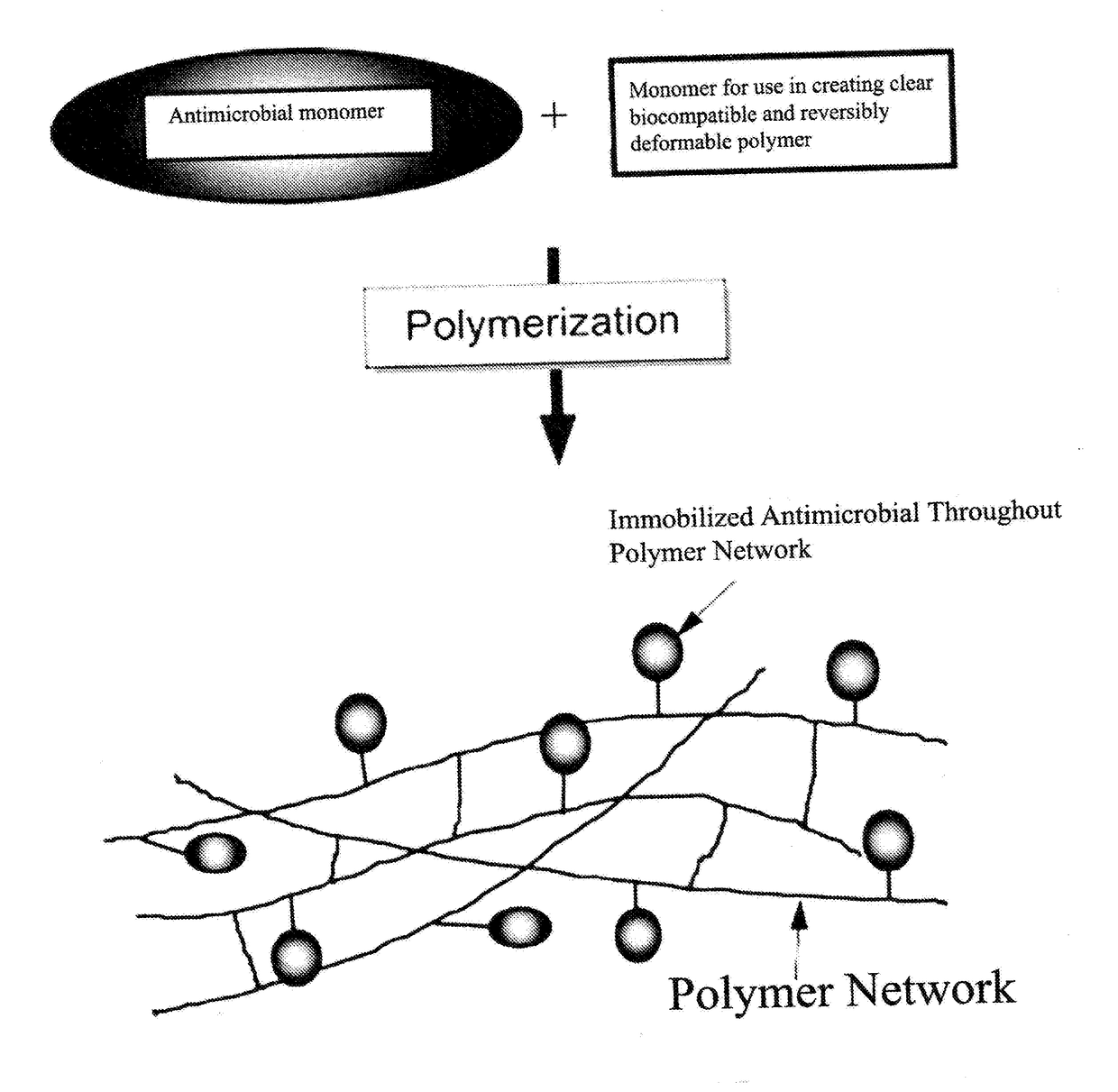Antimicrobial Polymer for Use in Ophthalmic implants
a technology of ophthalmic implants and antimicrobial polymers, which is applied in the direction of antibacterial agents, pharmaceutical delivery mechanisms, prostheses, etc., can solve the problems of loss of vision or even eye loss, corneal abrasion, infection and corneal scarring, and regimens that have the significant disadvantage of needing to rely on the patient's compliance, so as to reduce the infection risk of the patient and optimize the function of the ophthalmic implan
- Summary
- Abstract
- Description
- Claims
- Application Information
AI Technical Summary
Benefits of technology
Problems solved by technology
Method used
Image
Examples
Embodiment Construction
[0016]The present disclosure provides antimicrobial polymers for use in ophthalmic implants, which are obtained by copolymerizing at least one antimicrobial monomer with at least one other monomer selected from an acrylic, silicone, vinyl or collagen monomer. The resulting antimicrobial polymer provides an antimicrobial, biocompatible, and reversibly deformable implant, which are also clear, translucent or opaque. These characteristics are desirable for the optimal function of ophthalmic implants that are designed for implantation inside ocular tissues through small incisions. Moreover, because the entire copolymer, not just the surface of the copolymer, has antimicrobial properties, ophthalmic implants made from this type of copolymer will not lose their antimicrobial properties even if the surface of the implant becomes eroded over time. This is particularly important for ophthalmic implants which are exposed to the surface of the eye, where blinking will cause erosion of the poly...
PUM
| Property | Measurement | Unit |
|---|---|---|
| translucent | aaaaa | aaaaa |
| biocompatible | aaaaa | aaaaa |
| adsorption | aaaaa | aaaaa |
Abstract
Description
Claims
Application Information
 Login to View More
Login to View More - R&D
- Intellectual Property
- Life Sciences
- Materials
- Tech Scout
- Unparalleled Data Quality
- Higher Quality Content
- 60% Fewer Hallucinations
Browse by: Latest US Patents, China's latest patents, Technical Efficacy Thesaurus, Application Domain, Technology Topic, Popular Technical Reports.
© 2025 PatSnap. All rights reserved.Legal|Privacy policy|Modern Slavery Act Transparency Statement|Sitemap|About US| Contact US: help@patsnap.com


